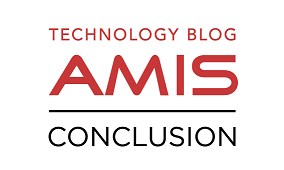Tag: javascript
De Java SIG (Special Interest Group) van AMIS organiseert op donderdag 16 april een bijeenkomst (publiek toegankelijk) over asynchrone interacties in Java EE (web) applicaties. Synchrone interacties in de …
This article does not necessarily discuss the big themes and major stories of Oracle OpenWorld 2014. It does mention a number of facts that I discovered, overheard, observed or …
In demos and tutorials we only care about the happy-flow of our applications. That is ok, because we only run that code in our own little predictable environment and …
Using a custom image as the base map for the ADF DVT Thematic Map component, such as is supported as of release 12.1.3, is very interesting. Visualization is extremely …
Tag Clouds are an interesting way to present information. They very quickly convey an impression of the relative sizes of a substantial number of entities and they do so …
A little while ago I got a very nice challenge: play around with the ADF client-side framework. The customer had a table where users could multi-select via an extra …
In the past few days, I have been working hard on several projects – both ADF and (plain) Java based, with quite a bit of JavaScript involved as well. …
In a previous article, I have discussed the open source jWebSocket Server and a simple installation and configuration (https://technology.amis.nl/blog/14940/first-steps-with-jwebsocket-open-source-java-framework-for-websockets-installation-and-running-samples). Subsequently, I have shown the implementation of a web client …
In a previous post – https://technology.amis.nl/blog/14949/push-based-synchronized-slideshow-web-application-implemented-using-websockets-and-jwebsocket-server-the-open-source-java-websocket-server – I discussed the implementation of the synchronized slideshow application using Web (HTML/JavaScript) clients and jWebSocket as websocket server. In an earlier article, …
In a recent article, I have introduced jWebSocket – an open source Java based server for WebSocket communication: https://technology.amis.nl/blog/14940/first-steps-with-jwebsocket-open-source-java-framework-for-websockets-installation-and-running-samples. In this article, I have described how to download and …
In a string of recent articles, I have discussed downloading, installing and running demos for a number of different tools, frameworks and libraries that support push-style (web) applications in …
In the last few articles, I have discussed downloading, installing and running demos for a number of different tools, frameworks and libraries that support push-style (web) applications in one …
The situation: in an ADF Faces 11g page, we have a popup with two buttons: one to start a download and one to cancel the popup. When the users …
This article demonstrates how, through a bit of JavaScript interacting with the HTML 5 Navigator API, some more JavaScript using the ADF Faces Rich Components API and the ADF …
This very brief article demonstrates how a fairly complex, nested JSON document can be created using a single SQL query. The main features used in the SQL statement are …
This article describes a way to extend and override the standard behavior of ADF client side JavaScript libraries. In this particular case we needed to learn about the client …
In this article, we will continue a discussion on asynchronous processing started in a previous article that introduced asynchronous and parallel processing Java using Executors, Futures, Callable Objects …
When you run a ADF Faces 11g Rich Client components application, you (or rather your users) are hit with a substantial JavaScript download overhead. It is not surprising, …

